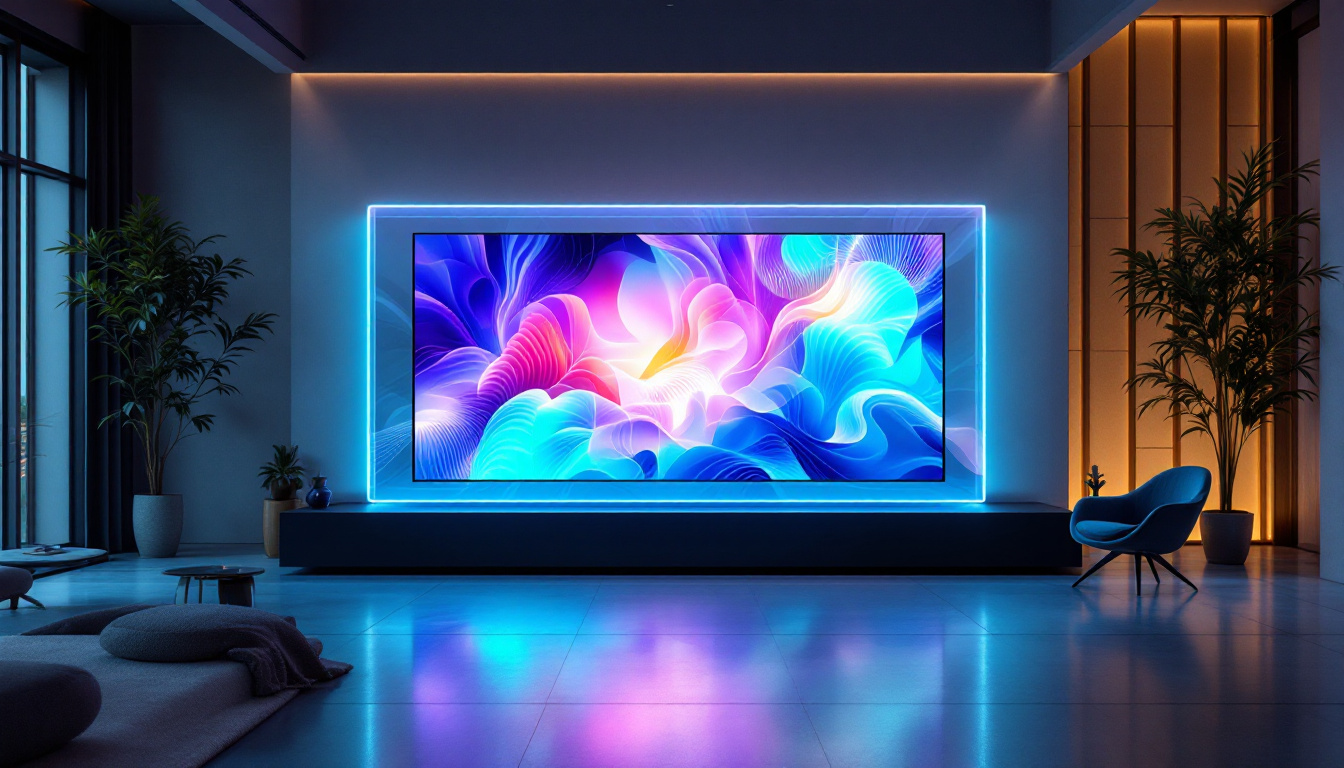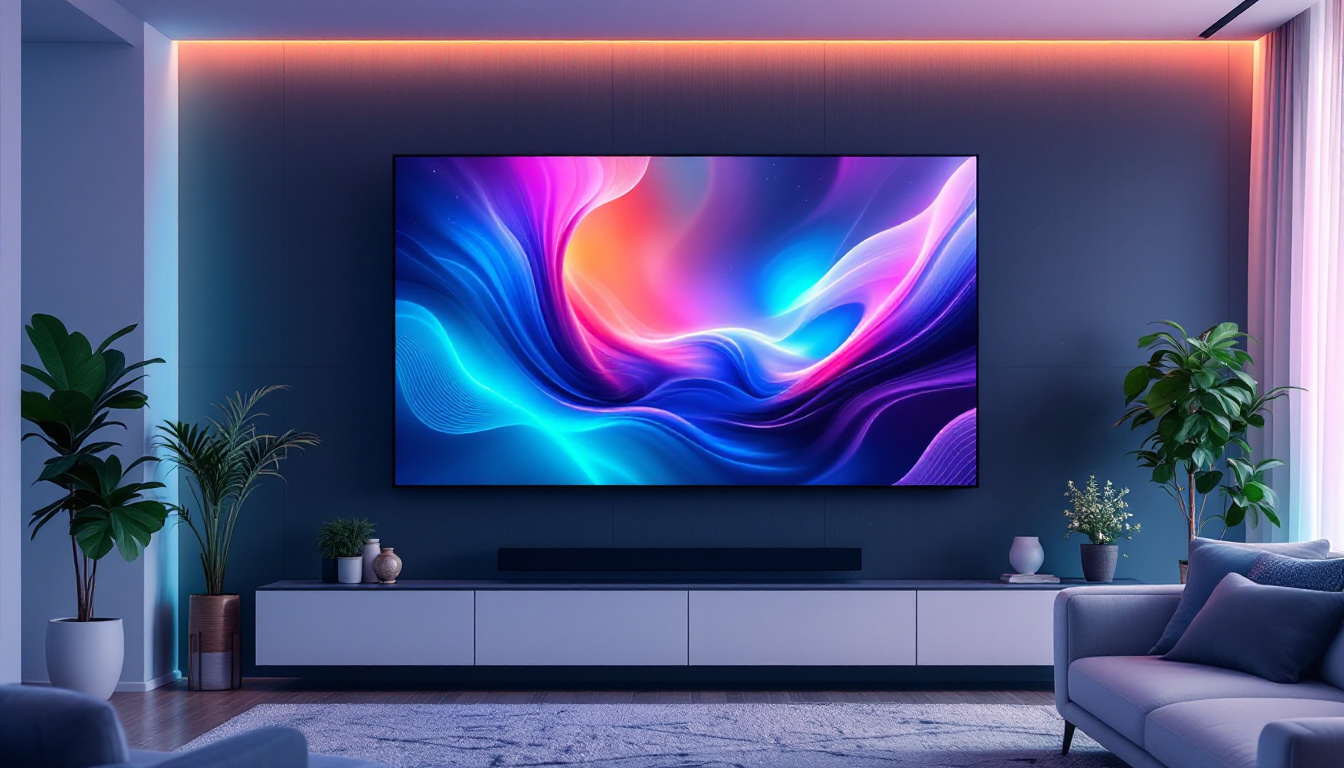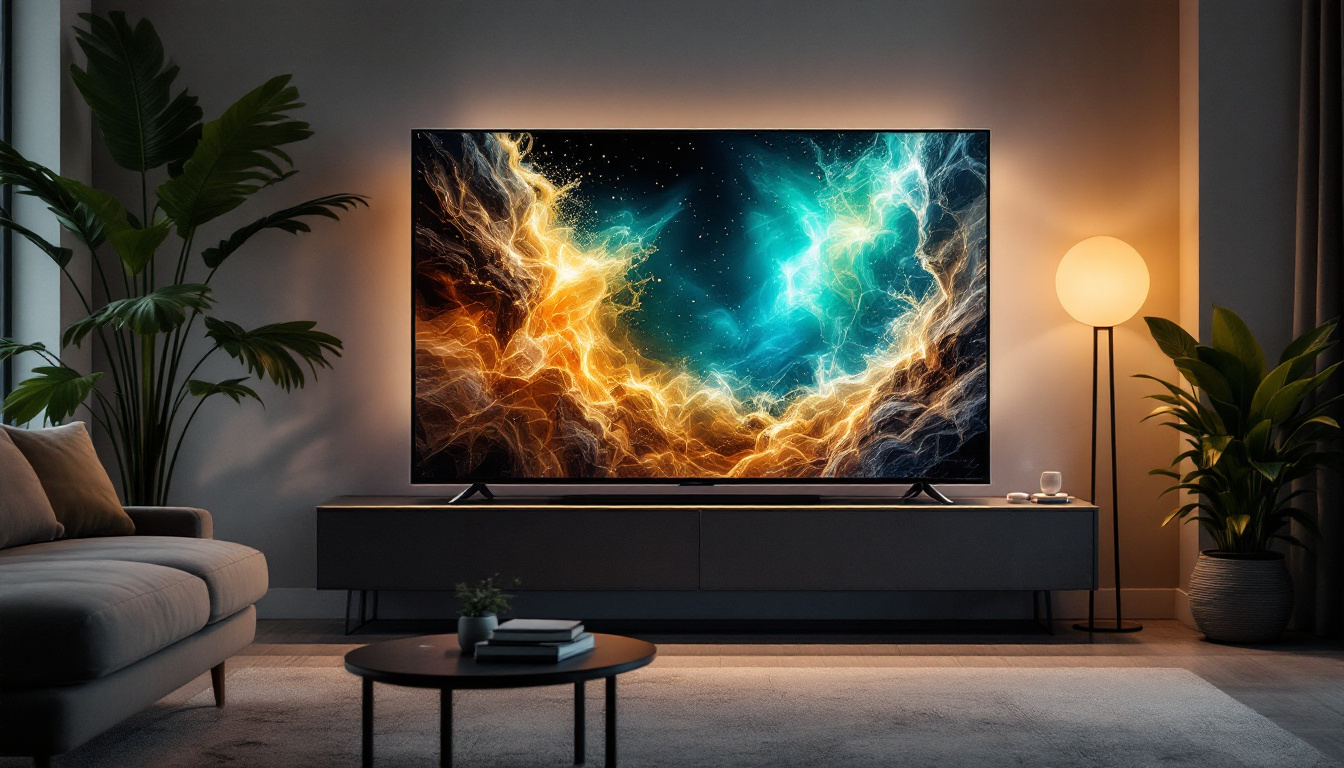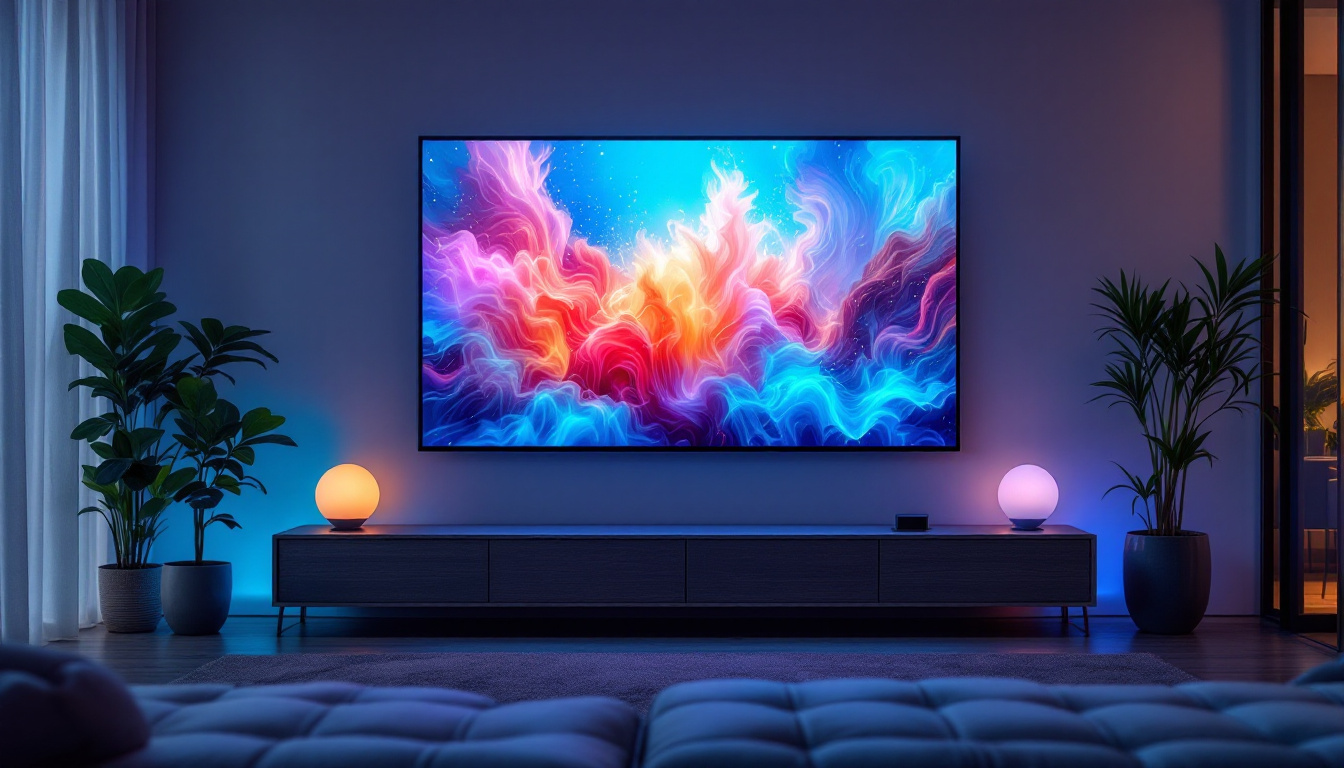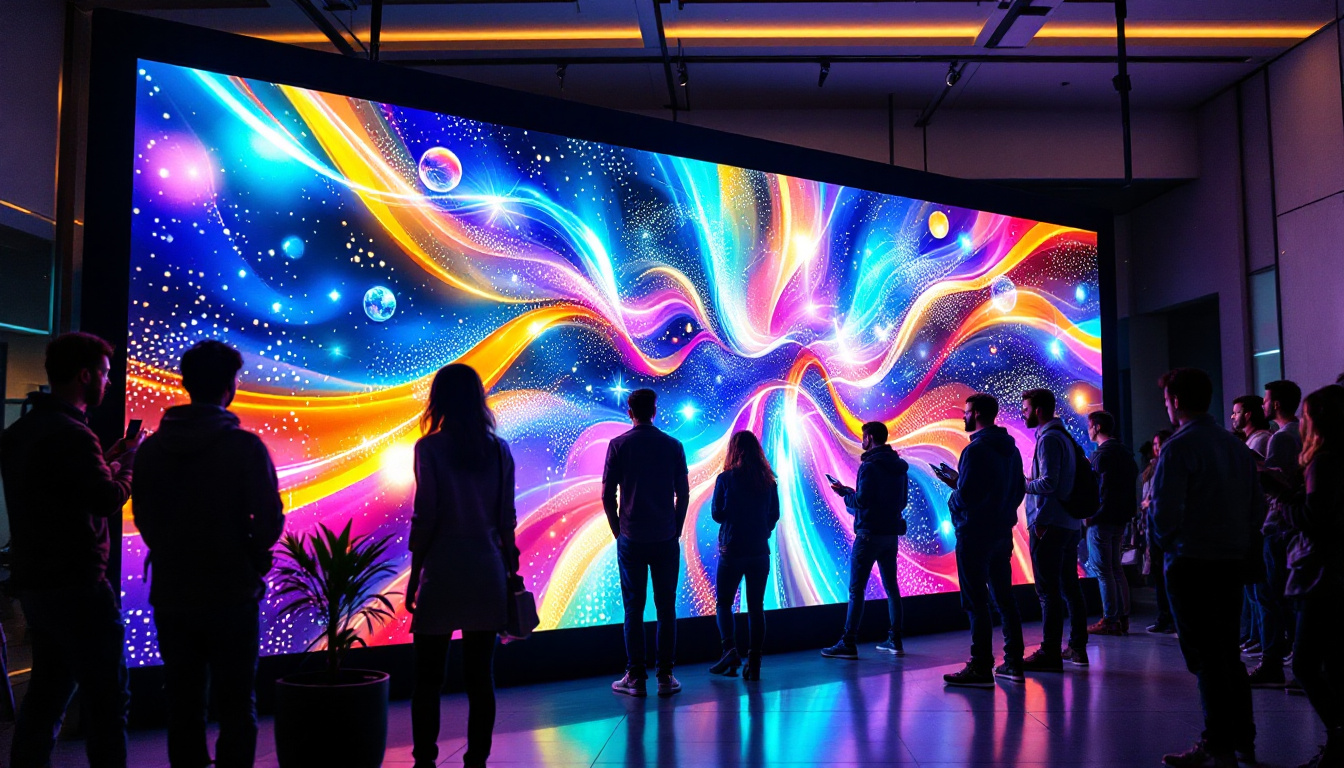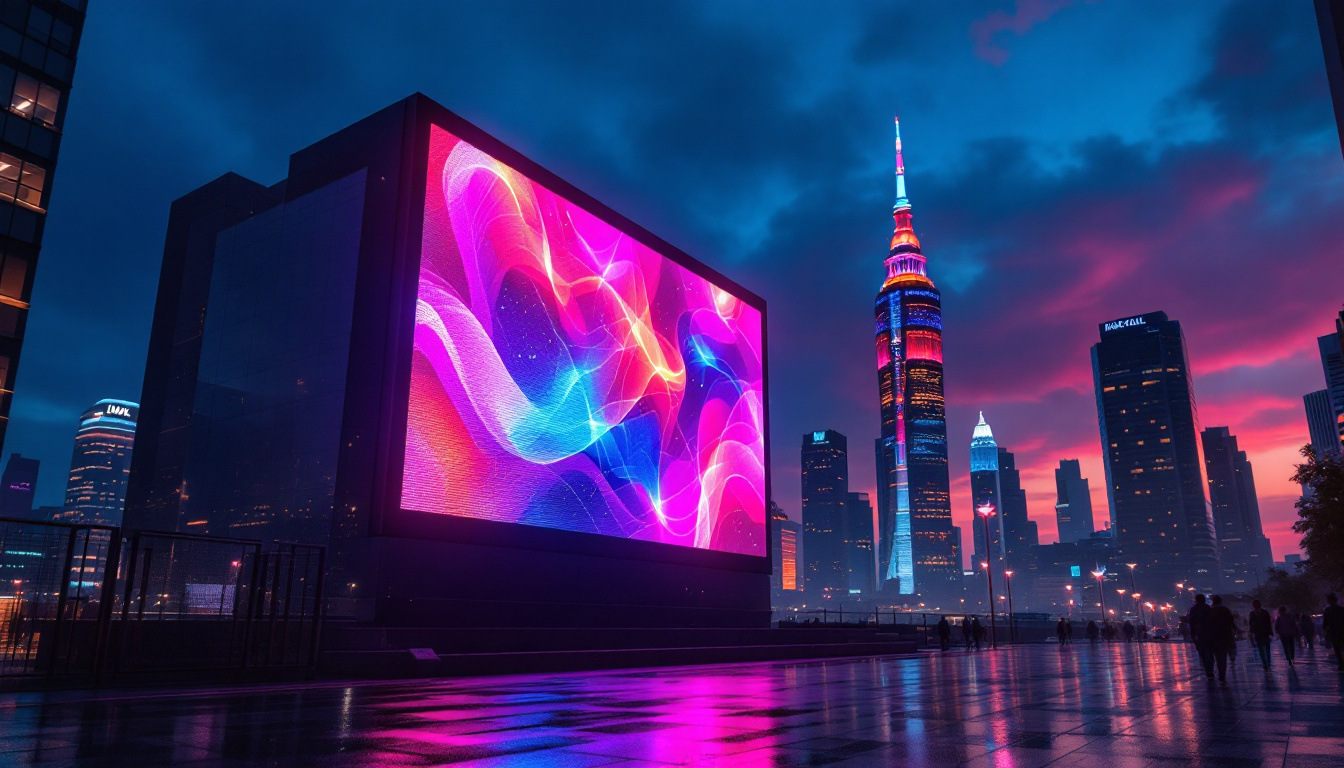In recent years, the world of display technology has undergone significant transformations, leading to innovations that redefine how we interact with digital content. One of the most exciting advancements is the transparent OLED display, a technology that merges visual appeal with functionality. This article delves into the intricacies of transparent OLED displays, exploring their workings, applications, and the advantages they offer over traditional LED displays.
Understanding OLED Technology
Organic Light Emitting Diode (OLED) technology has revolutionized the way screens are built and function. Unlike traditional LED displays that rely on backlighting, OLED panels emit light individually from each pixel. This unique characteristic allows for deeper blacks, higher contrast ratios, and more vibrant colors. As a result, OLED technology is not only found in televisions but has also made its way into smartphones, tablets, and even wearable devices, enhancing the visual experience across various platforms.
How OLED Works
At its core, an OLED display consists of several layers, including a substrate, an anode, organic layers, and a cathode. When an electric current passes through the organic layers, they emit light. The colors are produced by different organic compounds, enabling a wide spectrum of hues. This self-emissive nature of OLED technology is what allows for the creation of transparent displays. Furthermore, the flexibility of OLED materials means that they can be used in innovative applications, such as curved and foldable screens, which are becoming increasingly popular in the market.
Advantages of OLED Technology
OLED displays offer numerous advantages over traditional LCD and LED technologies. One of the most notable benefits is their ability to produce true blacks, as individual pixels can be turned off completely. This leads to enhanced contrast and a more immersive viewing experience. Additionally, OLED displays are thinner and lighter, making them ideal for modern design aesthetics. Another significant advantage is their faster response times, which reduce motion blur and make them particularly suitable for fast-paced gaming and action-packed movies. Moreover, OLED technology is energy-efficient, especially when displaying darker images, as it consumes less power compared to its LED counterparts, contributing to longer battery life in portable devices.
What is a Transparent OLED Display?
A transparent OLED display is a type of OLED technology that allows light to pass through the screen while still displaying images and videos. This innovative design creates a unique viewing experience, blending the digital and physical worlds. The technology is still in its early stages but has garnered significant interest across various industries. With the ability to create visually striking displays that do not obstruct the view, transparent OLEDs are poised to revolutionize how we interact with digital content in our everyday environments.
How Transparent OLED Displays Work
Transparent OLED displays function similarly to standard OLED panels, with the added capability of transparency. The organic layers are designed to allow light to pass through, enabling users to see objects behind the screen while still viewing digital content. This is achieved by using a combination of transparent materials and advanced manufacturing techniques. The pixels in a transparent OLED display emit light when an electric current is applied, while the transparent substrate allows ambient light to filter through. This dual functionality not only enhances the aesthetic appeal of the display but also makes it energy-efficient, as it can utilize natural light to improve visibility.
Applications of Transparent OLED Displays
The potential applications for transparent OLED displays are vast and varied. From retail environments where product displays can be enhanced with digital information to automotive applications where navigation and entertainment systems can be integrated seamlessly into windshields, the possibilities are endless. Furthermore, transparent OLED technology can be used in smart homes, allowing for interactive windows that display information without obstructing the view. In the realm of advertising, brands can utilize transparent displays in storefronts to create eye-catching promotions that engage customers while still showcasing their products. Additionally, in the field of architecture, transparent OLED panels can be incorporated into building facades, providing both functional and artistic elements that can change the appearance of a structure based on the displayed content. This fusion of technology and design opens up new avenues for creativity and functionality in both commercial and residential spaces.
Advantages of Transparent OLED Displays
Transparent OLED displays offer several advantages that set them apart from traditional display technologies. Their unique characteristics open up new avenues for creativity and functionality.
Enhanced User Experience
The ability to see through a display while still accessing digital content creates a more engaging user experience. For instance, in retail, transparent displays can showcase products while providing additional information, such as pricing and features, without blocking the view of the merchandise. This interactive approach can significantly enhance customer engagement and drive sales. Moreover, in environments like museums or galleries, transparent displays can provide contextual information about exhibits without detracting from the artwork itself, allowing visitors to appreciate both the visual and educational aspects simultaneously.
Space-Saving Design
Transparent OLED displays are inherently more space-efficient than their traditional counterparts. Their slim profile allows for integration into various environments without taking up valuable physical space. This is particularly beneficial in urban settings where real estate is at a premium. The technology can be seamlessly integrated into architecture, enhancing both aesthetics and functionality. For example, transparent displays can be used as windows in smart buildings, providing natural light while also serving as information panels or advertising spaces. This dual-purpose functionality not only maximizes space but also contributes to energy efficiency by reducing the need for artificial lighting during the day.
Versatile Applications
The versatility of transparent OLED displays extends beyond retail and architecture. In the automotive industry, these displays can be integrated into vehicle windshields, providing drivers with essential information such as navigation, speed, and alerts without obstructing their view of the road. This heads-up display technology enhances safety by keeping the driver informed while maintaining focus on driving. Additionally, in the realm of augmented reality (AR), transparent OLEDs can overlay digital information onto the real world, creating immersive experiences for users in gaming, education, and training scenarios. The potential applications are vast and continue to evolve as the technology advances.
Challenges Facing Transparent OLED Technology
Despite the numerous advantages, transparent OLED displays also face several challenges that must be addressed for widespread adoption. These challenges include manufacturing complexities, cost considerations, and limitations in brightness and color accuracy.
Manufacturing Complexities
The production of transparent OLED displays is more complex than that of traditional displays. The need for precision in creating layers that allow for transparency while maintaining image quality poses significant challenges. As technology advances, manufacturers are working to streamline production processes, but achieving consistency remains a hurdle.
Cost Considerations
Currently, the cost of transparent OLED displays is higher than that of traditional LED displays. This is primarily due to the advanced materials and manufacturing techniques required. As demand increases and production scales up, it is expected that costs will decrease, making the technology more accessible to consumers and businesses alike.
Comparison with Traditional LED Displays
When evaluating transparent OLED displays, it’s essential to compare them with traditional LED displays to understand their unique benefits and limitations. Each technology has its strengths and weaknesses, making them suitable for different applications.
Image Quality
Transparent OLED displays excel in image quality, offering superior contrast ratios and color accuracy compared to traditional LED displays. The ability to produce true blacks enhances the overall visual experience, making OLED technology preferable for applications where image quality is paramount.
Viewing Angles
Another advantage of transparent OLED displays is their wide viewing angles. Unlike traditional LED displays, which can suffer from color distortion and brightness loss at extreme angles, OLED technology maintains consistent image quality regardless of the viewer’s position. This is particularly beneficial in environments where multiple viewers may be observing the same display.
Future Prospects of Transparent OLED Displays
The future of transparent OLED displays is promising, with ongoing research and development aimed at overcoming current challenges. As technology continues to evolve, several trends are expected to shape the future of this innovative display technology.
Integration with Augmented Reality
One of the most exciting prospects for transparent OLED displays is their potential integration with augmented reality (AR) applications. By overlaying digital information onto the real world, transparent displays can enhance user experiences in various fields, including education, healthcare, and entertainment. This fusion of technology has the potential to transform how individuals interact with their environments.
Advancements in Manufacturing Techniques
As manufacturers invest in research and development, advancements in production techniques are likely to emerge. Innovations such as roll-to-roll printing and improved material formulations could lead to more efficient manufacturing processes, reducing costs and increasing the scalability of transparent OLED displays. This could pave the way for broader adoption across industries.
Conclusion
Transparent OLED displays represent a significant leap forward in display technology, merging the digital and physical worlds in a way that was previously unimaginable. With their unique characteristics, these displays offer enhanced user experiences, space-saving designs, and a myriad of applications across various industries.
While challenges remain in terms of manufacturing complexities and cost, the future of transparent OLED technology is bright. As advancements continue to unfold, it is likely that this innovative display will become a staple in our daily lives, reshaping how we interact with the world around us.
In conclusion, the transparent OLED display is not just a technological marvel; it is a glimpse into the future of how digital content will be integrated into our environments. As this technology matures, it will undoubtedly open new avenues for creativity and functionality, making it an exciting area to watch in the coming years.
Discover the Future of Display Technology with LumenMatrix
Ready to experience the cutting-edge of visual display technology? LumenMatrix is at the forefront of innovation, offering a wide array of LED display solutions that bring your content to life. From transparent OLED displays that blend digital brilliance with the physical world to dynamic indoor and outdoor LED walls, vehicle displays, and custom solutions tailored to your needs, LumenMatrix is dedicated to revolutionizing visual communication. Elevate your brand visibility and engage your audience like never before. Check out LumenMatrix LED Display Solutions today and step into a world where digital clarity meets impactful storytelling.

